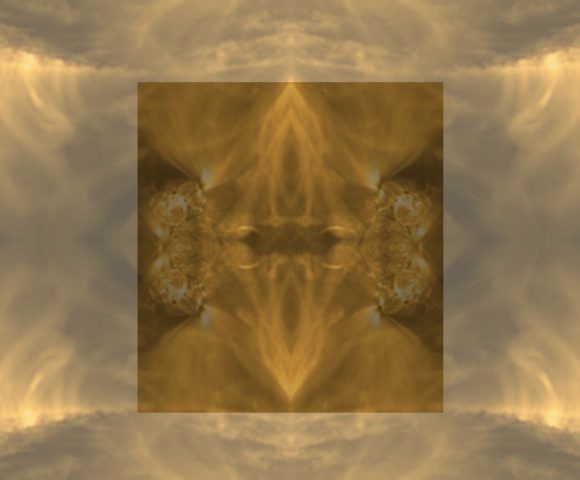In Jung’s examples of synchronicities, at least three ingredients seem necessary: first, there is a perceived connection between two events; secondly, a subjectively felt need for an explanation of that connection; and thirdly, an inability to construe the connection as a causal relationship.

1. We just have to start by noting — once more — how extremely subjective, even by psychological standards, each of these three ingredients really is.
First, whether there is a connection between two given events is frequently a matter of interpretation. That is certainly so in those examples where the connection is something of only personal relevance to the subject, such as in my earlier case of the re-connect with old friends on the same day. But even in examples where there is some intersubjective agreement about a “symbolic” connection (e.g. a person dies and at the same hour a mirror breaks in their daughter’s house), that is very much a matter of interpretation. Some interpretational patterns (symbolic tropes) of course are traditionally established and become cemented by their frequent re-telling, and these seem to be intelligible more easily when they are encountered in synchronicities. But they are interpretations nonetheless, and their acceptance depends on the subjective viewpoint of one or more persons.
Secondly, whether something needs explanation or not is also a rather fuzzy thing. With some of the more striking examples (such as coincidences with more than three events) there seems general agreement that there is something to explain, and the circumstances can be made to increase that effect in the telling, viz. the striking story of M. Fontgibu (quoted on GW VIII, §830). But if there is a mere coincidence of two events, whose significance is only apparent to a single person, it may well be a matter of dispute whether there really is a phenomenon to be explained. Some people may perceive it so, others not. (A good illustration is the example Fordham uses, where even the subject himself might not have classified the event as synchronicity had he been already somewhat more progressed in his personal development; see Fordham, New Developments in Analytical Psychology, 47-48.)
And thirdly, an inability to construe the connection between the events as a causal relationship is presumably an inability on the subject’s part. That part boils down to our everyday, commonsense abilities to connect cause and effect, which we usually do in a very rough way only. But of course there exists a variety of other, more precise notions of causality than that — though normally a subject would not be trained in them; and if they were, they would not expend the effort to use them in mere everyday life, where it would be overkill.
2. It is important here to distinguish between personal explanation attempts on the one hand and scientifically established, theoretical explanations on the other. When a subject encounters an event, feels intense surprise or confusion, and expresses this in statements such as “This can’t be a mere coincidence!” (GW VIII, §827), then that formulation hints at the breakdown of commonsense explanations which seem — to the subject — incapable of making the event intelligible. It is true that the subject uses quasi-scientific vocabulary (“coincidence”). But commonsense notions of probability and coincidence are typically blurry and do not rest on careful quantitative reasoning and adequate concepts. That they break down and do not explain the world to the subject (in the case of this event) does not mean that a careful empirical investigation, using appropriate statistical methods, would be equally unable to reach a result. Such scientific explanation may not be convincing to the subject, of course (especially when it shows that, after all, it was just a coincidence); and that is in part because the ability to evaluate the explanatory quality depends itself on training which (by definition) the subject does not have.
What we have, in such situations, is not scientific research hitting a limit of its theoretical paradigm (“inexplicable empirical findings”); there is no scientific research going on at all. What is going on is commonsense dealing with everyday reality, and doing so from a habit of using weakly developed bits and pieces of the scientific worldview, which of course generally work well (hence the habit). And commonsense, using scientific bits and pieces, hits a situation which it cannot make sense of, using those bits and piences (or actually, using anything it knows at all).
But that is not in itself something very remarkable. We just happen to be out of our depth from time to time with our commonsense, that’s just part of life — whether that commonsense is infused with scientific bits and pieces or not. But we mustn’t confuse the failing of those bits and pieces with the limitations of actual scientific research.
3. Even apart from the subjective character of all the ingredients, there are several unnecessarily unclear elements to Jung’s formulations.
As we have seen above, what needs explanation is the connection between two events — not the events themselves. To say that there is no causal explanation for such connection means that a) the first event did not cause the second event, and b) the second event did not cause the first one, either. Typically, this would be expressed by saying that there is no (direct or indirect) causal chain between the two events.
But that is not the same as saying that either event was itself uncaused. For each of the two events is part of a larger world, after all, and each will have had its causes. Take the example of the death and mirror again. When a person dies in one village, and a mirror breaks in another (at the same time, and in the house of that person’s daughter), we might wonder about the connection between the events. That connection is not (intelligibly) a causal chain: Neither has the mirror’s breaking caused the death, nor the death caused the mirror to break. But it would be extremely misleading to say things like “There is no causal explanation for these events”. Obviously, that is false: the person has died from specific (hopefully natural) causes. The breaking of the mirror has its causes too, whether it was a minor earthquake or simply fatigue of material. It’s just that none of these causes are identical with either of the synchronistic events.
4. Nor is it very remarkable that there are events which are not (directly or indirectly) connected by a causal chain. In fact, that is normally the case.
Just as I am writing this, it is getting darker outside, and I flip the switch on my desk lamp. At the exact same moment, a car honks its horn outside in the street. These two events are not connected by a causal chain: it would be absurd to thing that my flipping the light switch caused the car driver to honk; and reversely, that sound also was evidently not the cause of my action.
That any two given events are not causally connected is the default case. Two events only become candidates for questions of causality at all when we have some reason to ask — that is, when we have a need for explanation.
It seems that this is what Jung refers to when he distinguishes between ‘synchronicity’ and ‘mere synchronism’: “I use the […] notion of synchronicity in the special sense of a temporal coincidence [zeitlicher Koinzidenz] of two or more, causally not mutually related events, which have the same or similar meaning. This contrasts with ‘synchronism’, which means the mere happening of two events at the same time [bloße Gleichzeitigkeit]” (GW VIII, §849).
In other words, it is the characteristic of a meaningful impression on the subject which constitutes the need for explanation in the first place. But then again, that is very subjective indeed.
5. This may seem like a mere nuance, but it is actually quite important. What is in need of explanation, after all, is a psychological phenomenon. A subject’s attention is focused on particular events, there is an interpretation of these events as connected and meaningful, such connection cannot be construed by the subject (with commonsensical means) as a causal relationship nor does it look like a coincidence (again, by the light of commonsense statistics).
And we must admit that even nowadays we are not particularly clear, from a third-person point of view, how this comes about, nor are we especially good at making the whole thing intelligible, as from a first-person view, to a subject of such an experience — which we would like to become good at, of course, in part from academic motives, but also out of therapeutic necessity. Still, if we were getting clearer about all this, it would be a case of giving better psychological answers to psychological questions.
However, Jung insists on projecting the phenomenon into the external world, where he then finds a lack of explanatory capacity in the scientific principles. Thus he conjectures that “there are real a-causal connections [echte akausale Verknüpfungen] between events, explanation or comprehension of which would require a factor incommensurable with causality” (GW VIII, §827), and I can only read this language of “echte” a-causal connections here as placing them beyond the psychological into the external world. That language appears once again when Jung criticizes Silberer’s discussion as treating the phenomenon as exclusively psycholgical: “Apart from its both necessary and commendable psychological critique of coincidence, Silberers investigation contains no signs of the occurrence of real meaningful coincidences [das Vorkommen echter sinngemäßer Koinzidenzen].” (GW VIII, §832)
6. Now it is certainly true that synchronicities have an uncanny way of occurring, as it were, in the external world. That is to say: they shape the perceptions and interpretations, in a subject, of events in the external world. In contrast to, say, dreams, which are clearly “about” dream worlds, synchronicities definitely appear less as a psychological phenomenon. Rather, they vaguely create the impression to actually play out in physical reality. A mirror breaking, after all, is a real event in the world of physical objects.
Jung is surely right to insist that this quality must be accounted for. It is doubtful, however, whether such an account should take the impression at face value, and simply assume that there is something in the external world which must be explained in addition to what goes on in the psyche. After all, we have seen how many subjective factors go into the definition of synchronicities right from the beginning. And though mirrors breaking are real events in the external world, it is not obvious that the perceived meaningful connections with other events are likewise. To establish that, we would have to dig up a great deal more good arguments than we have seen so far.




[…] There is an often overlooked connection between the impression of something as meaningful — a “sense of meaning” — and a willingness to give up one’s own freedom of action and choice. Is that an ingredient in synchronicities, too? (After all, the feeling of meaningfulness is a necessary ingredient in the phenomenon as such.) […]
[…] and there would be no reason for further inquiry. (We must keep in mind, however, that it really is ‘everyday’ causality we are talking about here, not a scientific or formal philosophical notion.) It seems reasonable, […]